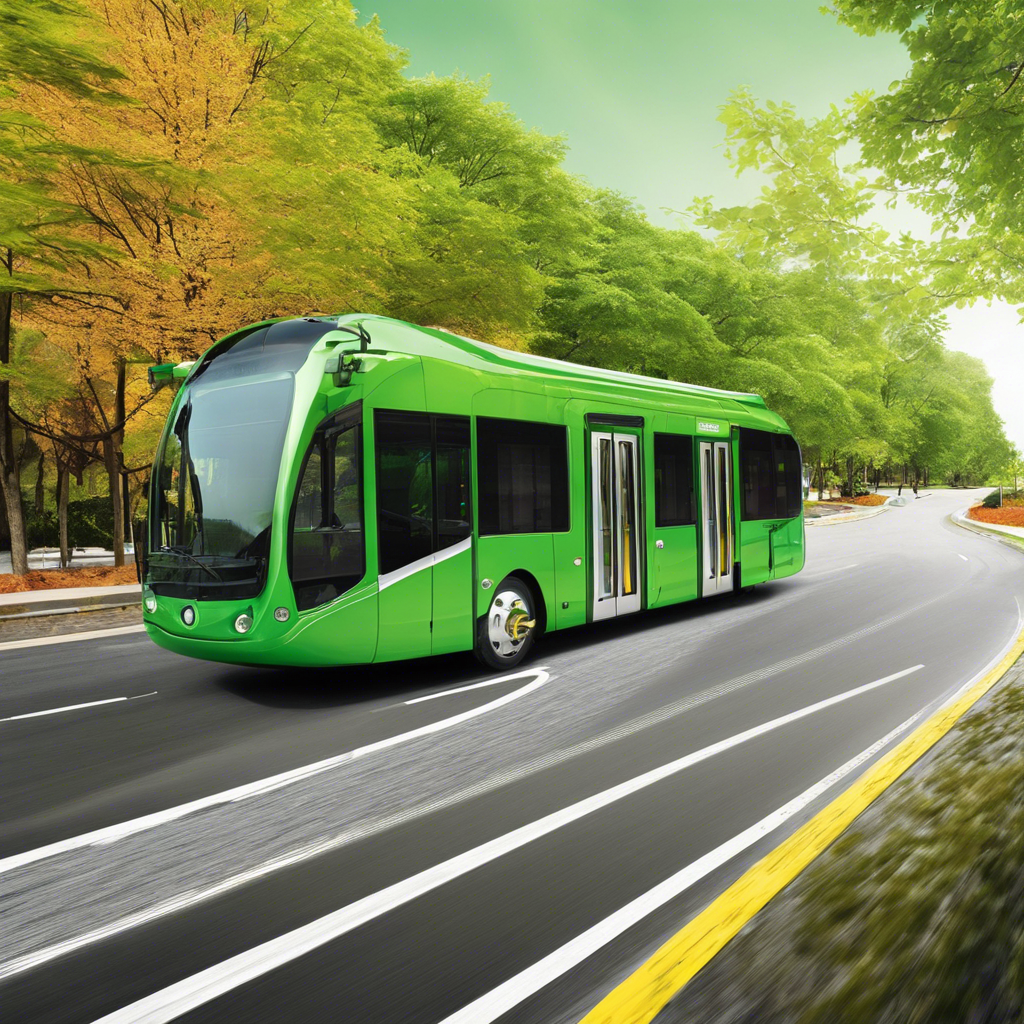Going Green: Eco-Friendly Transportation Options

# Going Green: Exploring Eco-Friendly Transportation Choices for a Sustainable Future
As environmental concerns continue to rise, the transportation sector has a crucial role to play in reducing its carbon footprint. The quest for eco-friendly transportation options is no longer just a trend but a necessity. From electric cars to bike-sharing systems, there are numerous ways we can make our daily commute more sustainable and contribute to a greener planet. Let’s dive into the fascinating world of green transportation!
One of the most talked-about innovations in eco-friendly transportation is electric vehicles (EVs). These modern marvels are quickly gaining popularity due to their zero-emission nature and efficient performance. Electric cars run on powerful batteries, eliminating the need for gasoline or diesel. With each year, the range of these vehicles increases, addressing the initial concerns of limited mileage. Major car manufacturers are investing heavily in EV technology, offering consumers a wide range of choices, from sleek sedans to spacious SUVs. The infrastructure for charging stations is also expanding rapidly, making it more convenient for EV owners to recharge on the go. Imagine plugging in your car for a quick charge while grabbing a cup of coffee!
For those who prefer two wheels over four, electric bikes and scooters provide an exhilarating and eco-conscious way to navigate city streets. These lightweight vehicles are perfect for zipping through traffic and reducing commute times. Many cities have embraced the concept of shared mobility by introducing electric bike and scooter-sharing programs. This not only promotes sustainable transportation but also reduces the number of vehicles on the road, easing traffic congestion. Imagine hopping on an electric scooter for a breezy ride to the park or using a bike-sharing service for a quick errand, all while reducing your environmental impact.
Public transportation systems are also evolving to become more environmentally friendly. Many cities are investing in electric buses and trains, significantly reducing emissions and improving air quality. These initiatives not only benefit the environment but also provide commuters with a more comfortable and efficient travel experience. The iconic double-decker buses in London, for instance, are transitioning to electric power, showcasing a perfect blend of tradition and sustainability. Moreover, the introduction of app-based ride-sharing services, such as Uber and Lyft, has encouraged the use of shared rides, further reducing the number of individual cars on the road.
Another exciting development in eco-friendly transportation is the emergence of hydrogen fuel cell vehicles. These vehicles convert hydrogen and oxygen into electricity, emitting only water vapor as a byproduct. Although still in the early stages of development, major automakers are investing in this technology, recognizing its potential to revolutionize the automotive industry. Hydrogen-powered cars offer longer ranges and faster refueling times compared to their electric counterparts, making them an intriguing option for long-distance travel. Imagine a future where you can travel hundreds of miles without worrying about charging stops!
In addition to electric and hydrogen-powered options, alternative fuels are also making a significant impact. Biodiesel, derived from renewable sources such as vegetable oils and animal fats, is being used in many diesel engines, reducing the reliance on fossil fuels. Similarly, ethanol, produced from corn or sugarcane, is blended with gasoline to create a cleaner-burning fuel. These alternative fuels are widely available at gas stations, making it easier for consumers to contribute to a cleaner environment without sacrificing convenience.
Encouraging sustainable transportation isn’t just about technology; it’s also about creating walkable and bike-friendly communities. Many cities are redesigning their urban landscapes to prioritize pedestrians and cyclists, making it safer and more appealing to travel short distances on foot or by bike. This shift promotes a healthier lifestyle and reduces the overall dependence on motorized transportation. Imagine strolling through beautiful tree-lined streets or cycling along dedicated bike lanes, enjoying the fresh air and reducing your carbon footprint at the same time.
As we embrace these eco-friendly transportation options, it’s essential to acknowledge the role of government policies and consumer choices. Incentives and subsidies for purchasing green vehicles, along with investments in supporting infrastructure, can accelerate the adoption of sustainable transportation. Additionally, raising awareness about the environmental benefits of these choices can motivate individuals to make conscious decisions. Every journey, big or small, contributes to a collective effort towards a cleaner and greener planet.
In conclusion, the journey towards eco-friendly transportation is an exciting one, filled with innovative solutions and a growing awareness of our environmental responsibilities. From electric vehicles to shared mobility options, we have the power to reduce our carbon footprint and create a more sustainable future. As we adapt and embrace these green transportation choices, we not only protect our planet but also build a healthier and more livable world for generations to come. Let’s make every commute count in the pursuit of a greener tomorrow!



